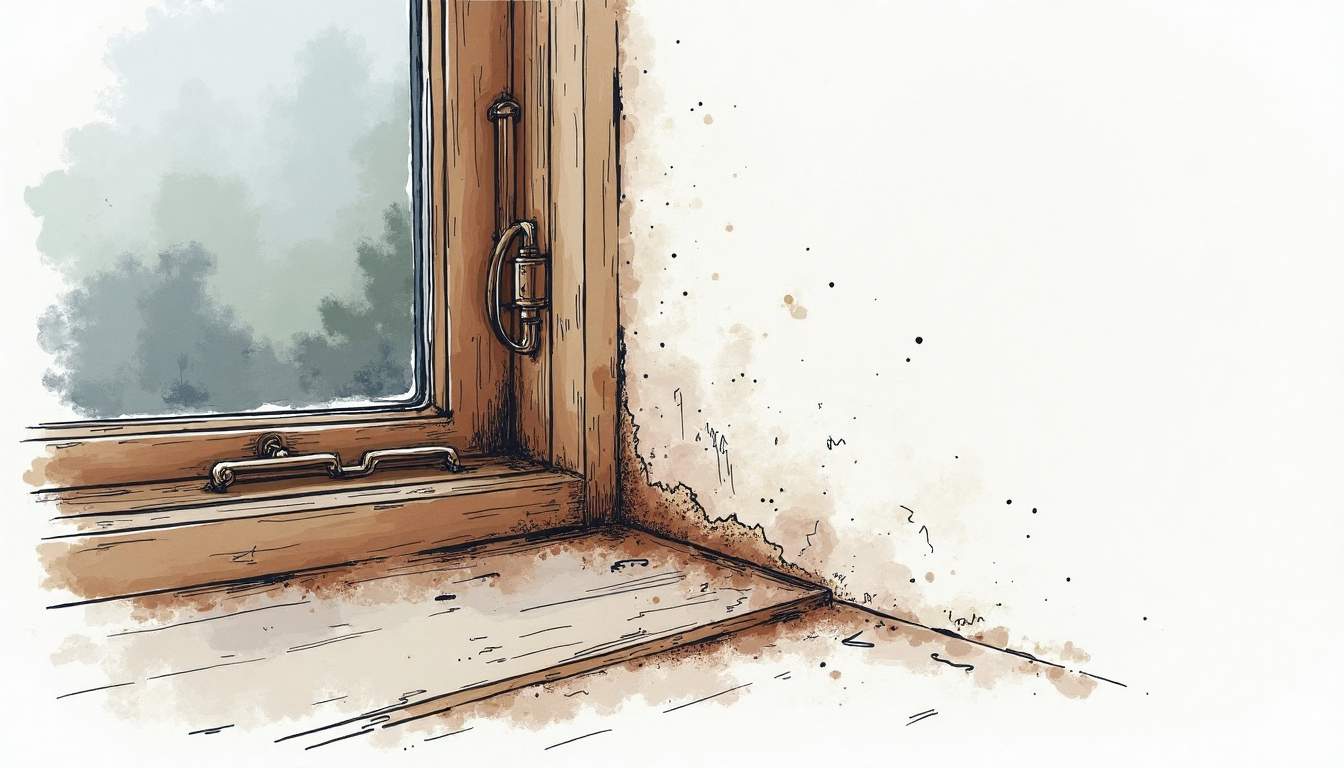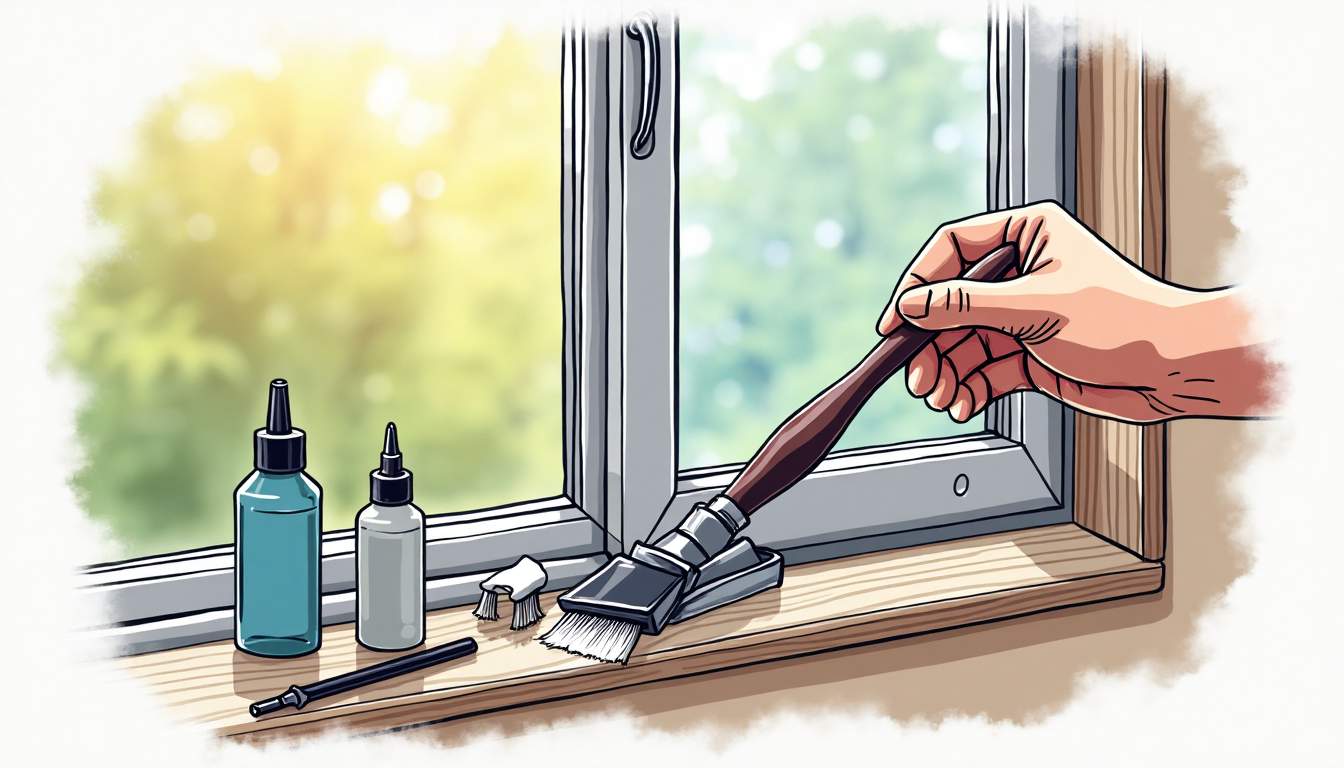Windows are an essential part of any home, providing natural light, ventilation, and a view of the outdoors. Over time, however, window hinges can become stiff or start to squeak, making opening and closing your windows a frustrating experience. Fortunately, lubricating window hinges is a simple and effective way to restore smooth, noise-free movement. This guide will walk you through everything you need to know to keep your window hinges in perfect working order.
Why Do Window Hinges Squeak?
Squeaky window hinges are a common household annoyance. The noise usually occurs because the metal parts of the hinge rub against each other without adequate lubrication. Over time, dust, dirt, and moisture can accumulate in the hinges, causing friction and corrosion. This not only causes noise but can also make the window harder to open and close, potentially leading to damage if left unaddressed.

Understanding the root cause of the squeak is the first step toward fixing it. Hinges are mechanical joints that rely on smooth movement between their components. When lubrication dries out or is absent, metal-on-metal contact creates that familiar creaking or squeaking sound. Additionally, environmental factors such as humidity and temperature fluctuations can accelerate wear and tear on window hinges.
In many cases, the squeaking can be resolved with a simple application of lubricant, such as silicone spray or graphite powder. These products not only reduce friction but also help repel moisture, which can further protect the hinges from rust and corrosion. Regular maintenance, including cleaning the hinges and applying lubricant, can extend their lifespan and ensure smooth operation. It’s advisable to check the hinges periodically, especially in areas with extreme weather conditions, as changes in temperature and humidity can exacerbate the problem.
Moreover, the type of hinge can also play a significant role in the likelihood of squeaking. For instance, heavy-duty hinges designed for larger windows may be less prone to squeaking than standard hinges due to their robust construction. Homeowners should consider the material and design of their window hinges when selecting replacements or upgrades. Investing in high-quality, rust-resistant hinges can lead to a quieter and more durable window operation, enhancing both the functionality and aesthetic appeal of the home. For expert assistance and quality hinge solutions, visit Window Repair Singapore.
Choosing the Right Lubricant for Window Hinges
Not all lubricants are created equal, and selecting the right one for your window hinges is crucial for effective and lasting results. The ideal lubricant should reduce friction, resist dust and dirt buildup, and protect against rust and corrosion.
Types of Lubricants Suitable for Window Hinges
1. Silicone Spray: Silicone-based lubricants are popular for window hinges because they provide a thin, water-resistant coating that won’t attract dust or grime. They are safe for most materials, including metal, plastic, and rubber, making them versatile for different window types.
2. White Lithium Grease: This grease is thicker than silicone spray and offers excellent long-lasting lubrication and protection against rust. It’s especially good for metal hinges but can sometimes attract dust, so it’s best used in less dusty environments.
3. Graphite Powder: A dry lubricant that is excellent for metal hinges, graphite powder reduces friction without leaving a greasy residue. It’s ideal if you want to avoid attracting dirt but can be a bit messy to apply.
Lubricants to Avoid
While it might be tempting to use household oils like WD-40 or cooking oils, these are generally not recommended for window hinges. WD-40 is more of a solvent and water displacer than a lubricant, so it can clean off old grease but doesn’t provide lasting lubrication. Cooking oils can gum up and attract dirt, leading to more problems over time.
Tools and Materials Needed
Before starting, gather the necessary tools and materials to make the lubrication process smooth and efficient. Having everything on hand will save time and prevent interruptions.
- Lubricant of choice (silicone spray, white lithium grease, or graphite powder)
- Clean cloths or rags
- Small brush or old toothbrush
- Flathead screwdriver or small pry bar (if hinge pins need to be removed)
- Protective gloves (optional but recommended)
- Paper towels or drop cloth to protect surrounding surfaces
Step-by-Step Guide to Lubricating Window Hinges
Step 1: Prepare the Area
Start by opening the window fully to expose the hinges. Place a drop cloth or some paper towels underneath the window to catch any drips or debris. This will help protect your window sill and floor from lubricant stains or dirt falling during the process.
Wipe down the hinge area with a clean cloth to remove surface dust and dirt. This initial cleaning prevents contaminants from mixing with the lubricant and causing further issues.
Step 2: Inspect the Hinges
Check the hinges for any visible signs of rust, corrosion, or damage. If rust is present, you might want to gently scrub the hinge with a wire brush or steel wool to remove loose rust before lubricating. Severely corroded hinges may require replacement to ensure proper function.
Also, test the window’s movement to identify which hinges are causing the noise or stiffness. Sometimes, only one hinge needs lubrication, while other times multiple hinges may require attention.
Step 3: Apply the Lubricant
For most hinges, spraying a small amount of lubricant directly onto the pivot points and moving parts is sufficient. If using silicone spray, hold the can about 6–8 inches away and apply a light, even coat. For white lithium grease, apply a small dab with a brush or your finger (wear gloves). Graphite powder can be puffed into the hinge crevices.
Be careful not to over-apply lubricant, as excess can drip or attract dust. A little goes a long way in ensuring smooth movement without mess.
Step 4: Work the Lubricant In
After applying the lubricant, open and close the window several times to work the lubricant into all moving parts. This action helps distribute the lubricant evenly and ensures that all friction points are coated.
If the window still feels stiff or noisy, apply a second light coat and repeat the process. Sometimes hinges that haven’t been lubricated for a long time may need a couple of treatments.
Step 5: Clean Up Excess Lubricant
Use a clean cloth to wipe away any excess lubricant from around the hinges and window frame. This prevents dirt and dust from sticking to the lubricant and keeps the area tidy.
Dispose of used rags properly, especially if they have grease or chemical residues, to avoid fire hazards or environmental harm.
When to Remove and Lubricate Hinge Pins
Some window hinges have removable pins that can be taken out for more thorough cleaning and lubrication. This is especially useful if the hinge is very stiff or noisy despite surface lubrication.
How to Remove Hinge Pins
Use a flathead screwdriver or small pry bar to gently tap the hinge pin upward from the bottom of the hinge. Be careful not to damage the pin or hinge. Once removed, wipe the pin clean with a rag and apply lubricant directly to it before reinserting.
Lubricating the pin itself ensures that the entire hinge mechanism moves smoothly. After reinserting the pin, test the window’s movement and apply additional lubricant if needed.
Maintenance Tips for Long-Lasting Window Hinges
Regular maintenance can prevent noisy hinges and prolong the life of your windows. Here are some tips to keep your window hinges in top shape:

- Lubricate Hinges Twice a Year: Aim to lubricate your window hinges at least twice a year, ideally in spring and fall, to prevent buildup and wear.
- Keep Hinges Clean: Periodically wipe down hinges to remove dust, dirt, and cobwebs that can interfere with smooth movement.
- Check for Rust: Inspect hinges regularly for signs of rust or corrosion, especially in humid climates. Address any rust promptly to avoid damage.
- Adjust Hinges if Needed: If windows become misaligned or difficult to close, check hinge screws and tighten or adjust them as necessary.
- Use Proper Lubricants: Always use appropriate lubricants designed for window hinges to avoid damage and ensure effectiveness.
Common Mistakes to Avoid When Lubricating Window Hinges
Even with the best intentions, some common errors can reduce the effectiveness of hinge lubrication or cause additional problems.
Over-Lubricating
Applying too much lubricant can cause it to drip onto window sills or floors, creating a mess and attracting dust. Excess lubricant can also gum up the hinge, making movement worse over time.
Using the Wrong Lubricant
Avoid household oils or multipurpose sprays that are not designed for long-term lubrication. These can evaporate quickly or attract dirt, leading to squeaky hinges returning sooner.
Neglecting Cleaning Before Lubrication
Lubricating dirty or rusty hinges without cleaning first can trap debris inside, worsening friction and noise. Always clean hinges before applying lubricant.
When to Call a Professional
While most window hinge lubrication tasks can be handled by homeowners, there are times when professional help is warranted. If your window hinges are severely corroded, damaged, or if the window frame itself is warped, a professional repair or replacement might be necessary.

Additionally, if your windows are part of a complex mechanism, such as tilt-and-turn or casement windows with multiple hinges and locking points, a specialist can ensure proper maintenance without risking damage.
Conclusion
Lubricating window hinges is a straightforward and cost-effective way to keep your windows operating smoothly and quietly. By choosing the right lubricant, preparing the hinges properly, and applying lubrication carefully, you can eliminate annoying squeaks and extend the life of your window hardware.
Regular maintenance and timely attention to hinge issues will save you from costly repairs and improve your home’s comfort. With a little care and the right approach, your windows can glide open and closed effortlessly for years to come.









